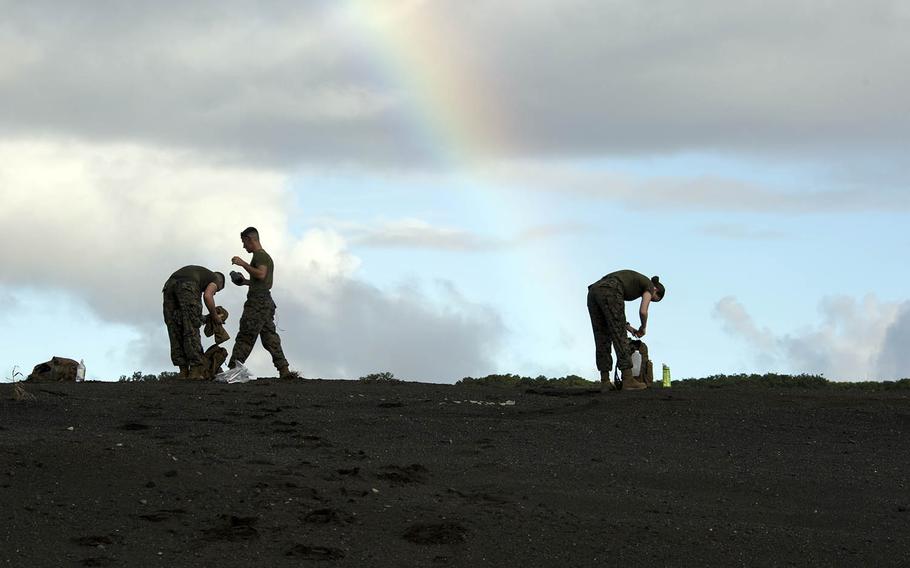
Marines from Marine Corps Air Station Iwakuni, Japan, collect sand on Iwo Jima, Nov. 7, 2017. (Mason Roy/U.S. Marine Corps photo)
A group of Japan-based servicemembers came face to face with history during a recent daytrip to the site of one of the fiercest and bloodiest battles of World War II.
The Nov. 7 jaunt to Iwo Jima — known in Japan as Iwo To — was part of a historical professional military education outing organized by Marine Corps Air Station Iwakuni’s Marine Aerial Refueler Transport Squadron 152, a service statement said.
Servicemembers soaked in the surroundings of the Feb.-March 1945 Battle of Iwo Jima during a demanding hike that took them past old Japanese cave positions, memorials and machine-gun nests on the way to the summit of Mount Suribachi, where six Marines famously raised a U.S. flag at the height of the bloody campaign.
An image of the flag-raising, captured by Associated Press photographer Joe Rosenthal, is considered one of the most iconic and recognizable images of the war.
“Never in my entire life did I think I’d ever be in Iwo Jima," Seaman Anthony Adams, a corpsman with VMGR-152, said in the statement. “It blew my mind. The best part of the day was being able to place my shield at the top of Mount Suribachi.
Down on the beaches — where Marines conducting amphibious landings faced what war correspondent Robert Sherrod described as “a nightmare in hell” as the Japanese bombarded them with everything from machine-gun fire and mortars to heavy artillery — servicemembers collected volcanic sand to take a piece of history back home with them.
Sgt. Gregory Voss, an aviation ordnance technician with Marine Aviation Logistics Squadron 12, said the visit tugged at his heart strings.
“This is a huge piece of Marine Corps history,” he said. “Marines shed blood, sweat and tears here … this is the most exciting thing that I’ve done in my career. I’m honored that I could be here.”